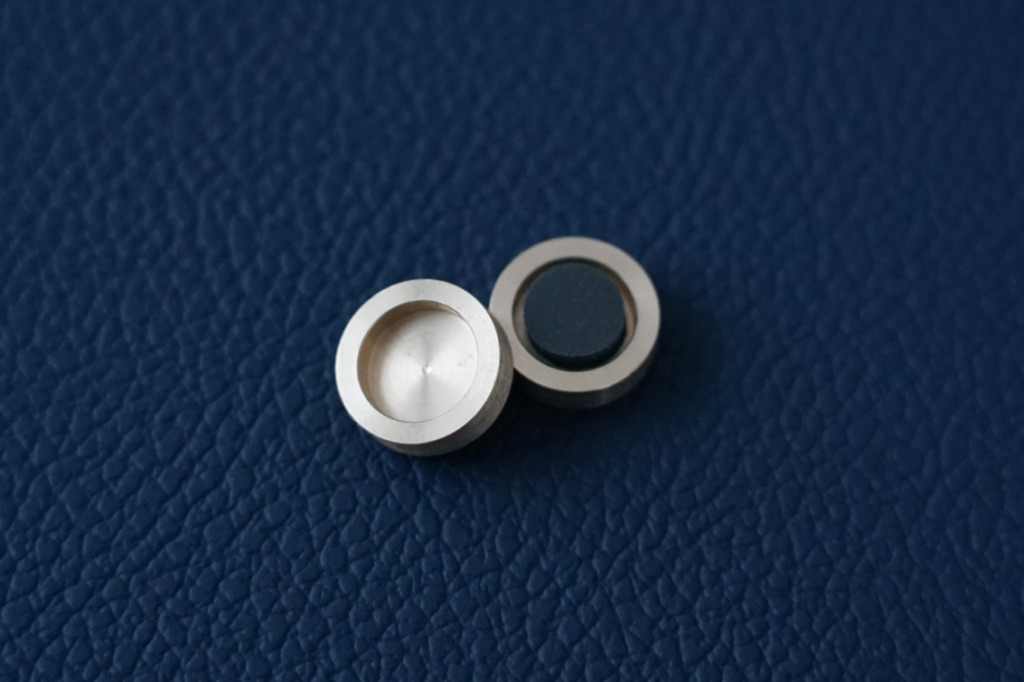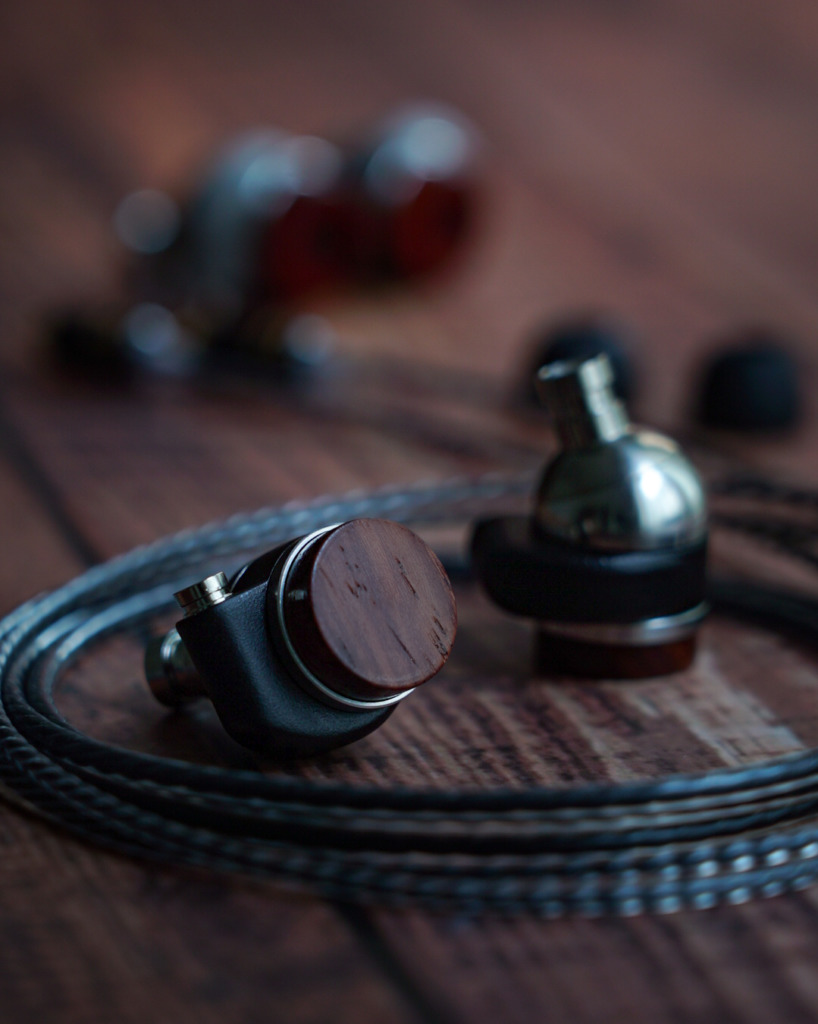LOAK2-TS(CL) is a model that has undergone a name change from the previous LOAK2(CL). While the housing configuration remains the same as the previous LOAK2(CL), we will provide explanations focusing on comparisons with other models in terms of sound.
Housing)
Front enclosure : Titanium.
Body enclosure : Stainless steel (only MMCX part is resin).
Rear enclosure : Various types of wood, stainless steel, brass, copper.


The front housing of the LOAK2 is nearly identical in shape to the previous LOAK, but the internal structure is slightly different, incorporating thin stainless steel in the area where the drivers are secured. While titanium and aluminum are excellent materials for transmitting sound from the drivers to the nozzle tip due to their low vibration damping, they are not as effective at dampening the vibrations of dynamic drivers. Therefore, by incorporating stainless steel into the contact surface of the drivers, we are able to effectively suppress the vibrations of the dynamic drivers and achieve powerful bass and stable sound without distortion.
The MMCX section is designed to be external to the housing that affects sound, and due to its slightly specialized structure, it is made from resin material using 3D printing.
The characteristics of sound and comparison with other models)
The distinctive feature of this model lies in its delicate mid-to-high range and dynamic low end, embodying the classic tuning style of 634EARS with balanced bass and treble. In comparison to other models, it offers a slightly tighter sound profile. Its frequency balance resembles that of MIROAK-II, and its overall sound quality feels akin to a higher-tier version of MIROAK-II.

Comparison of sound with LOAK2-Ti(CL):
Compared to the titanium-bodied LOAK-Ti(CL), I find that the sound of LOAK-TS(CL) is stronger, denser, and has a more pronounced attack. The Ti(CL) with its titanium body feels lighter, offers smoother sound, and maintains better balance. If you’re seeking a powerful and energetic sound, I believe the TS(CL) is more suitable. However, it may exhibit slightly sharper peaks in attack and high frequencies, so if you prioritize ease of listening, overall coherence of sound, and balance between power and agility, I recommend the Ti(CL). In terms of basic resolution and speed of response, I believe the Ti(CL) with its titanium body surpasses.

Regarding the choice of backplate)
This model exhibits greater differences in sound based on the type of wood or metal used in the rear housing compared to the open-back (OP) type. However, the variations in sound are within the range of LOAK2-TS(CL), meaning that while the choice of wood affects the sound, it remains within the scope of the LOAK-TS(CL) sound, and there are no significant differences that would make it sound like another model.
For a tight and crisp sound, I recommend using hard and dense woods. Ebony or even harder woods would be suitable for this purpose.
Conversely, for a slightly mellower sound, I suggest using woods that are not overly hard. Rosewood or softer woods would be preferable.
If you prefer a lighter and slimmer sound, opt for woods that are hard but not excessively dense (hardness > density). For example, Padauk would be suitable for this purpose.
I choiced for Indian Rosewood. It’s a very conventional choice of wood for use in 634EARS, offering a moderate hardness, high density, and excellent balance. While it lacks lightness in sound, it possesses a subtle warmth and a characteristic woody tone.


Metal materials are also available for selection. You can opt for colored metals by Momentum Factory Orii. Metals are processed slightly thinner than wood and hollowed out at the center to reduce weight. High-rebound materials are installed in the hollowed-out portion. This is because leaving the metal as a solid mass would add weight, and the strong rebound due to compression of air inside the rear housing would make the sound too harsh. Additionally, the high-rebound material installed at the center helps moderate the rebound of compressed air inside the rear housing and also provides moderate absorption, thereby mitigating the strong rebound of air caused by the hard and deformation-resistant metal. This allows the diaphragm to move dynamically without being too tight, resulting in a dynamic and voluminous sound.







